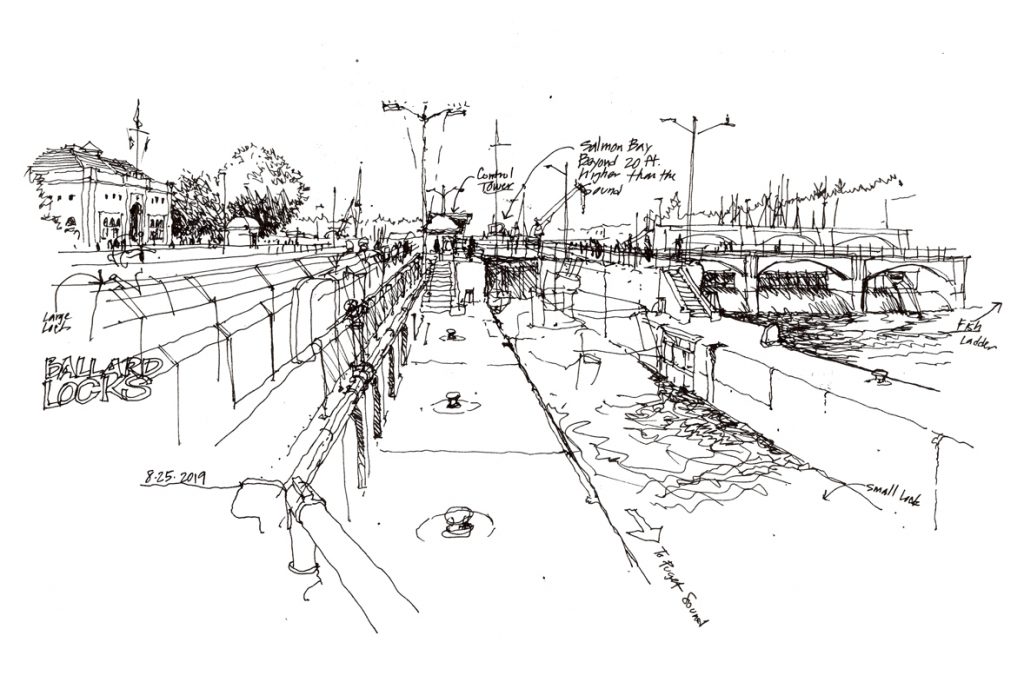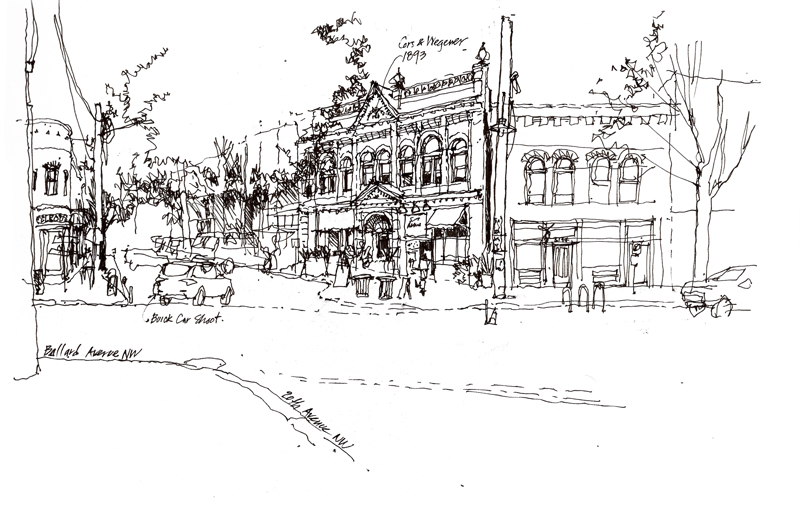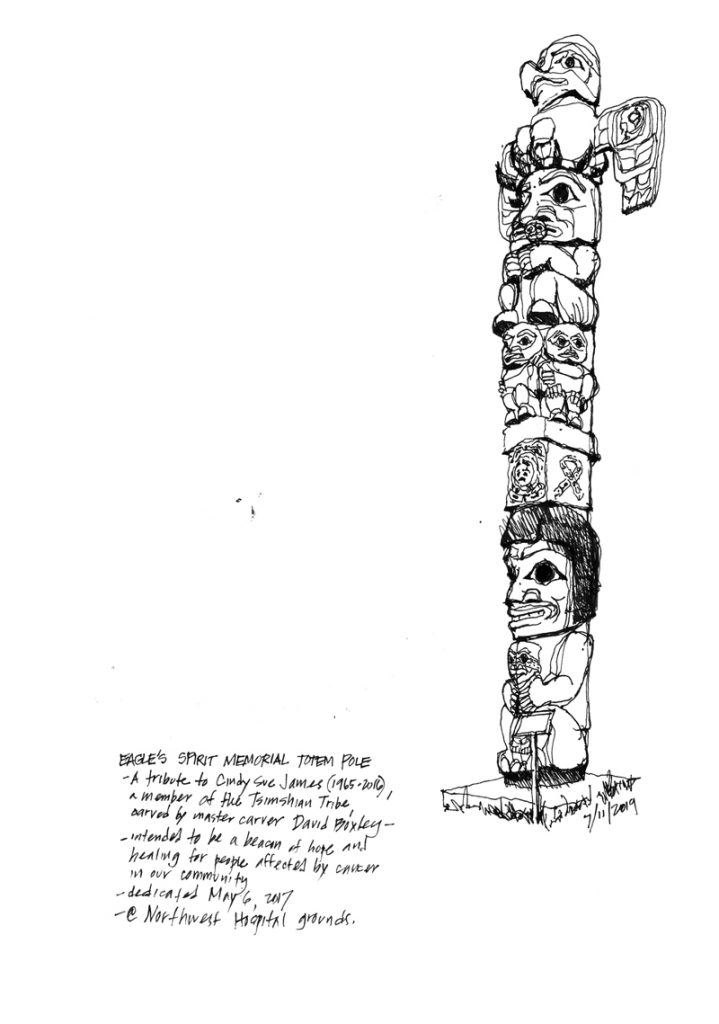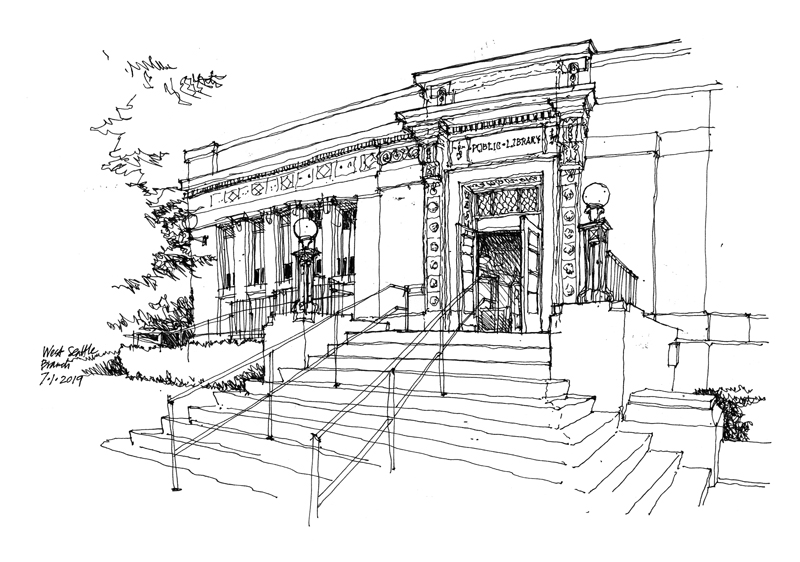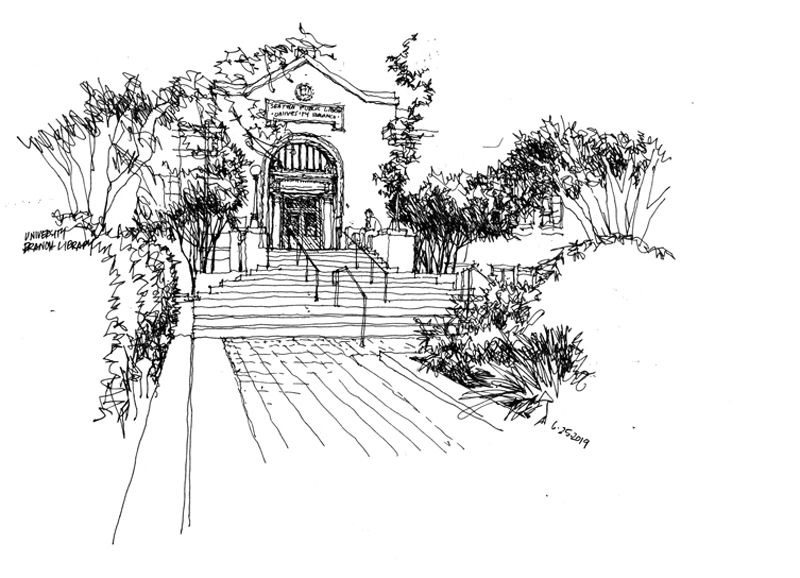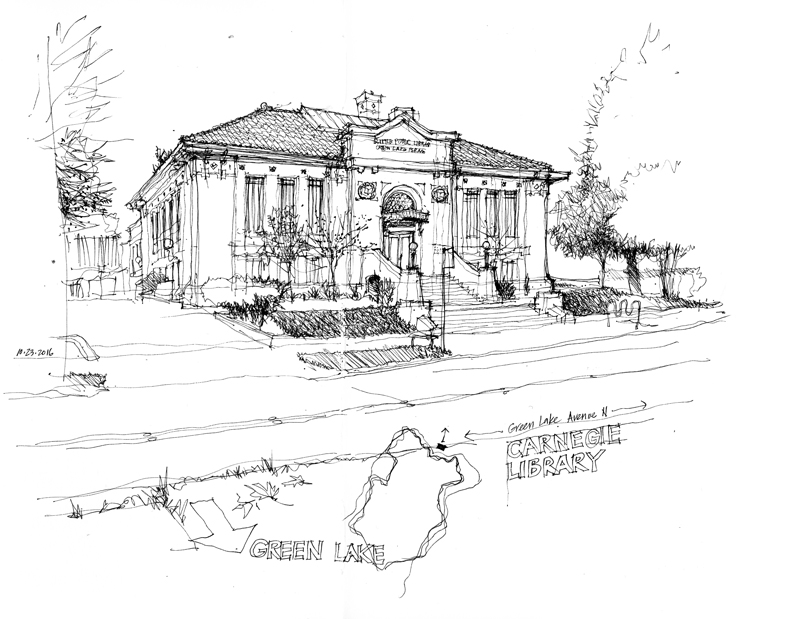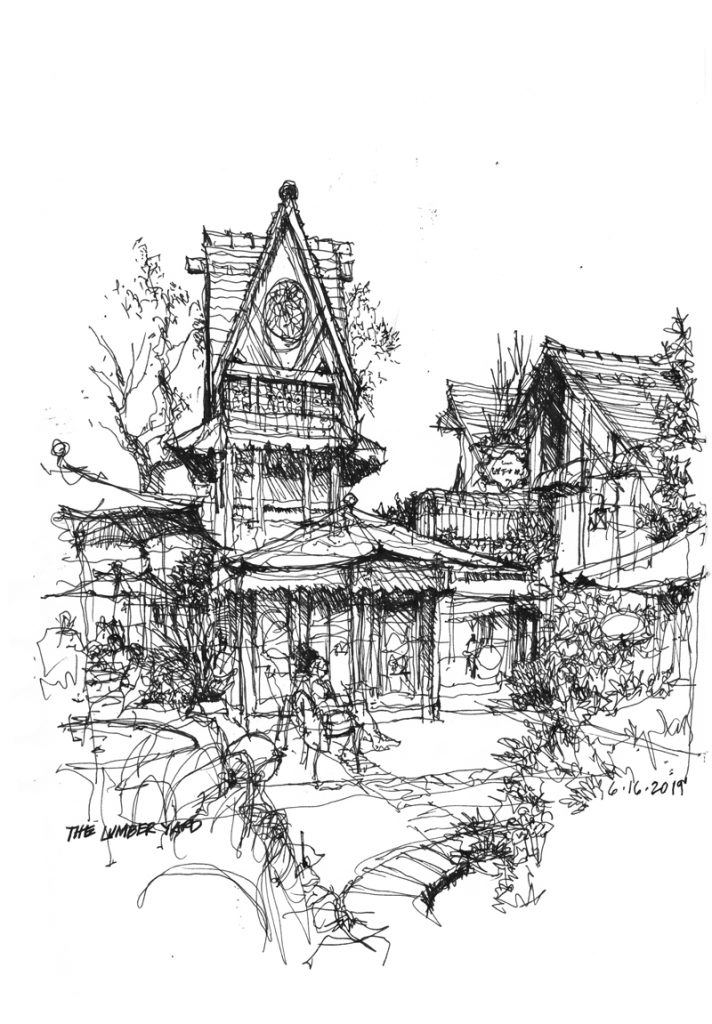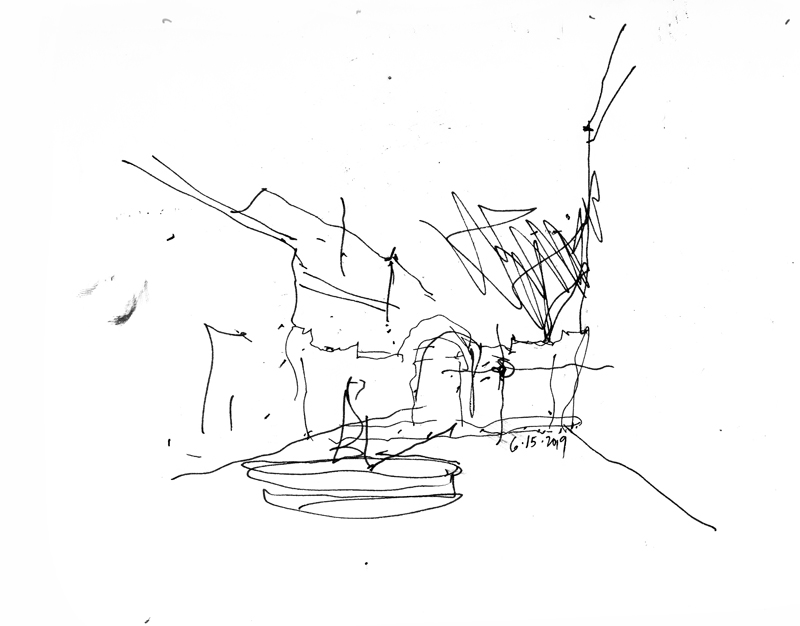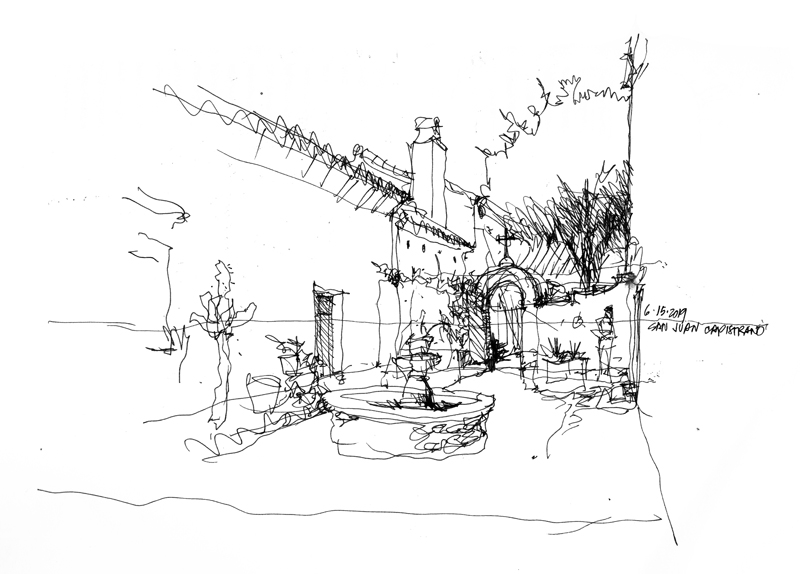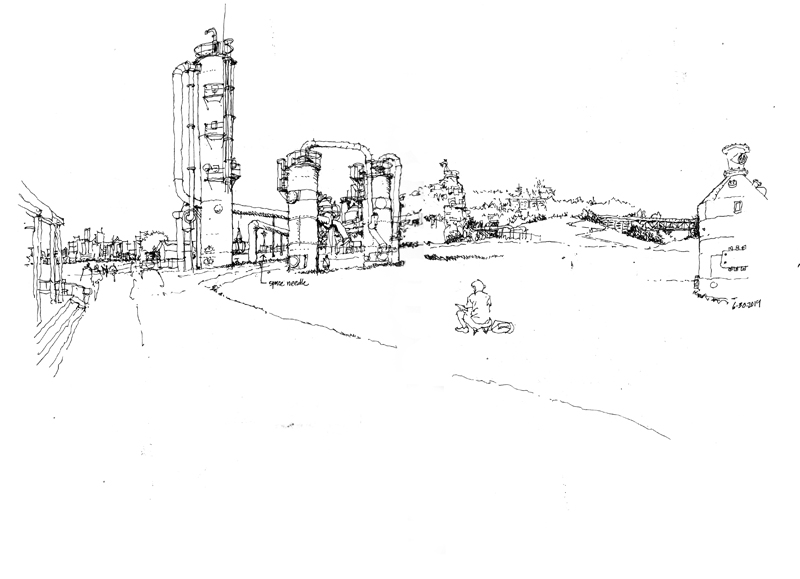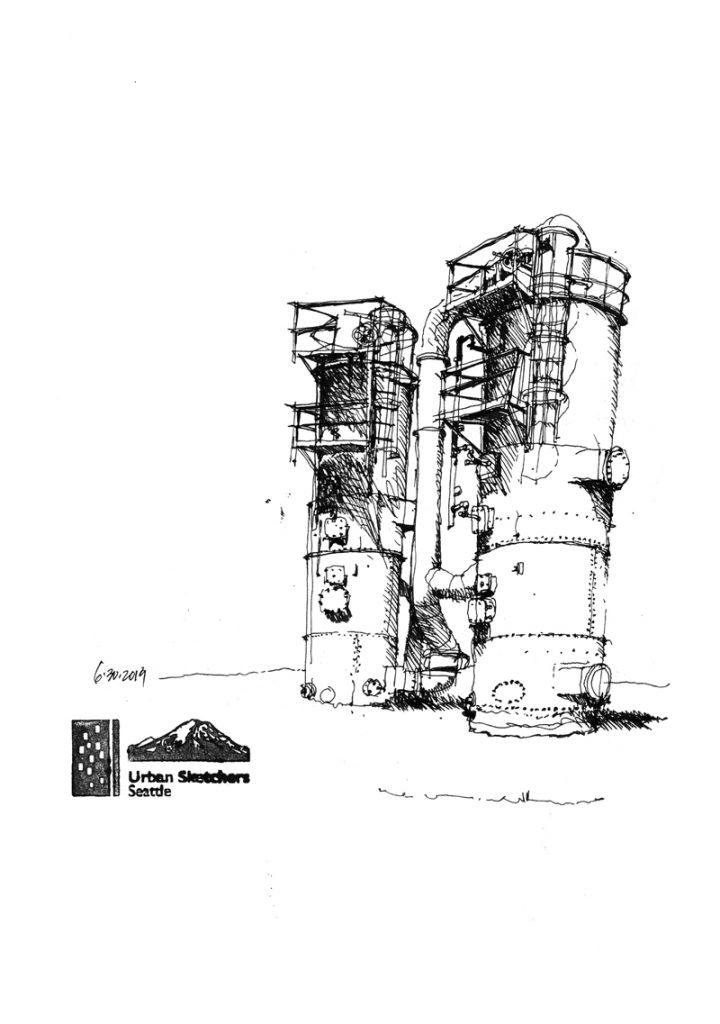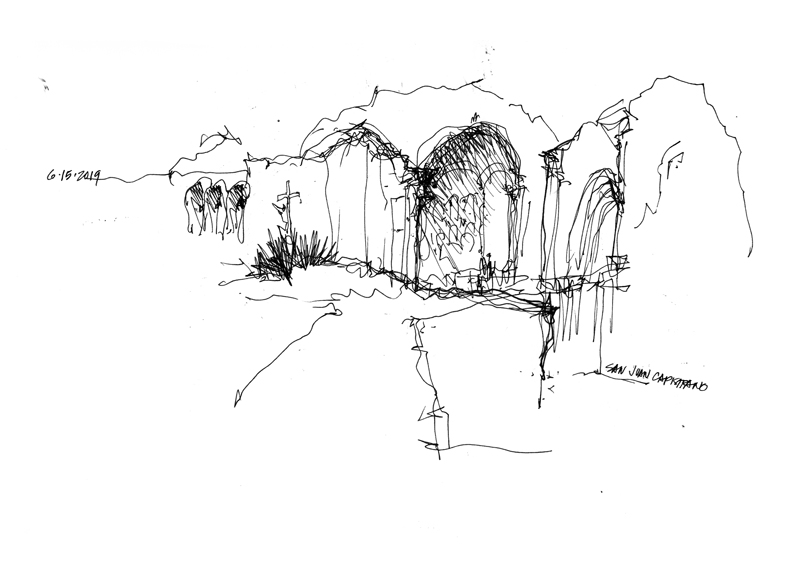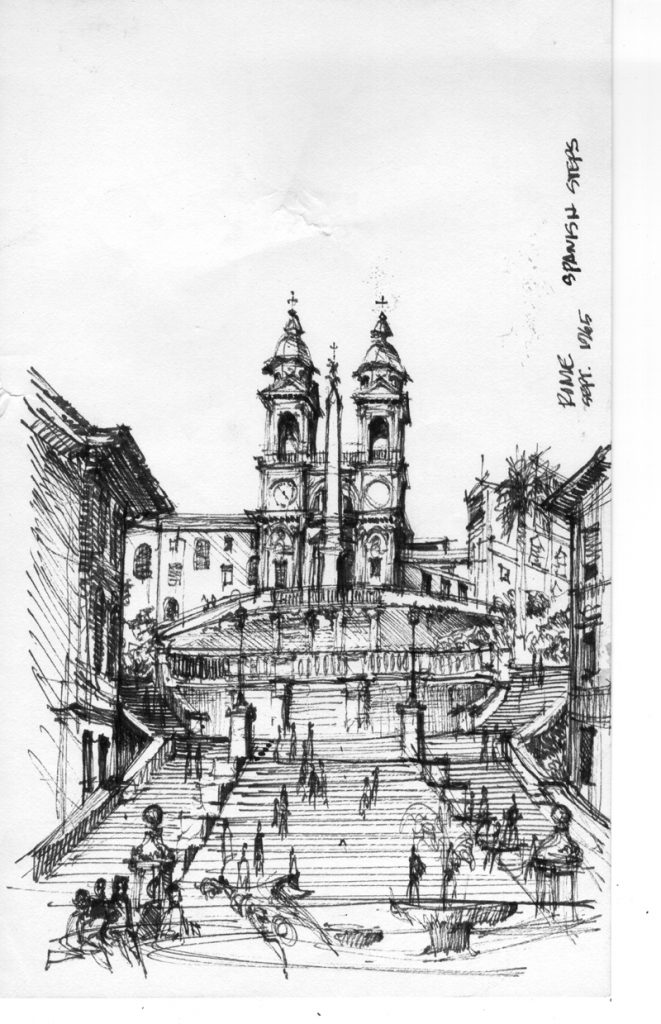
In my very first post on this site in February 2012, I showed a composite of two sketches I had done of the Spanish Steps in Rome. Here I am posting the full views of each drawing.
The first is from the summer of 1965, when I was fortunate to have had, through an ACSA exchange program, an internship with Wilson & Womersley, an architectural and town planning firm with offices on Bedford Square in London. At the end of the summer, armed with a Eurail Pass, I traveled around Europe for a couple of weeks. I did a few sketches on site, but not as many as I would have liked. The only one I still have in my possession is this view of the Spanish Steps in Rome, drawn with a fountain pen with a stub nib.
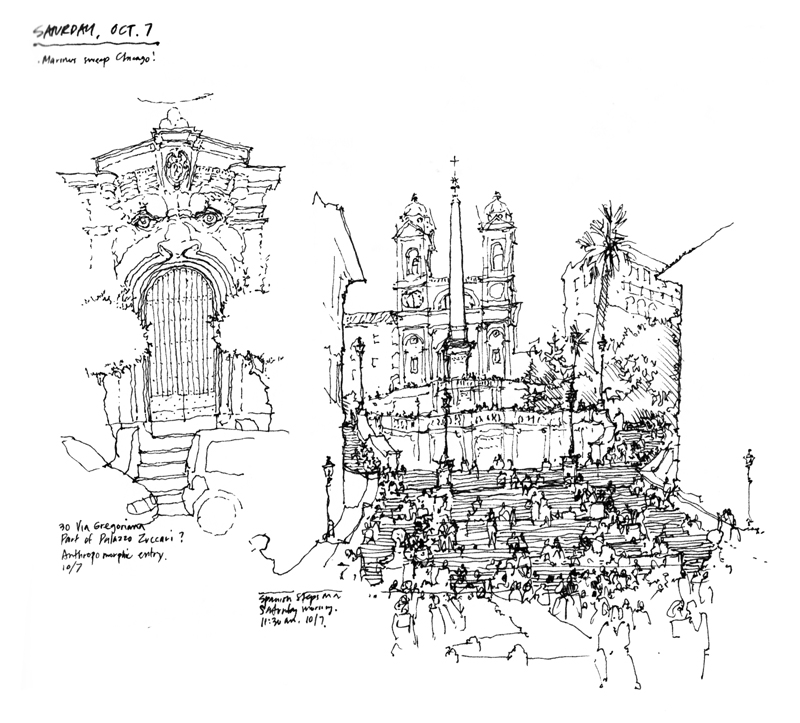
This is another drawing of the same site from 2000, the first time I had the privilege of teaching in the University of Washington’s Architecture in Rome program. Similar viewpoints but drawn 35 years apart with different nibs and separated by a lifetime of experiences.

